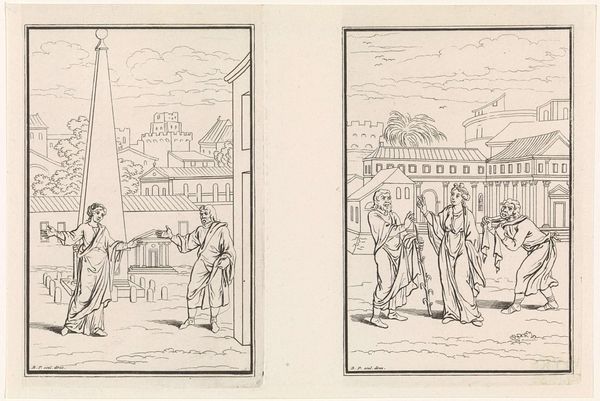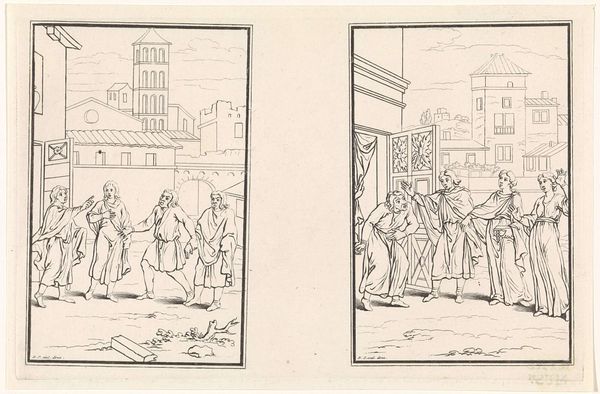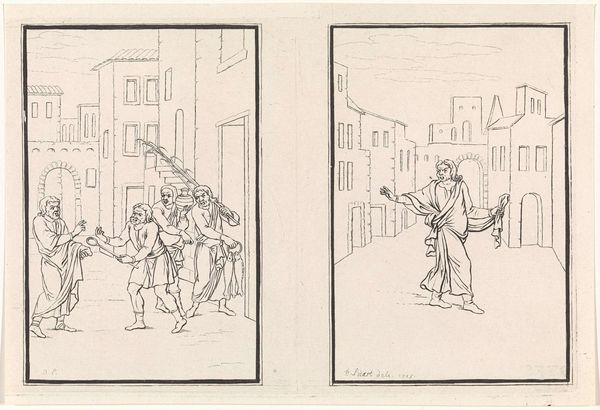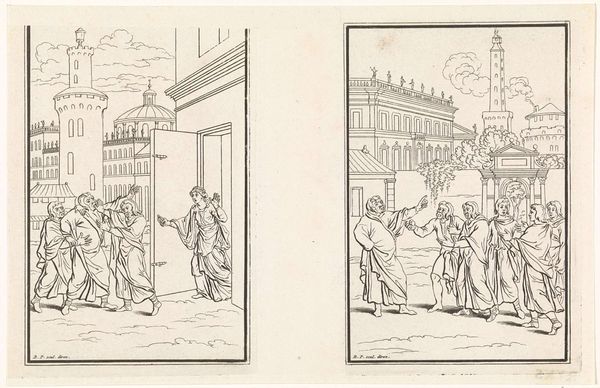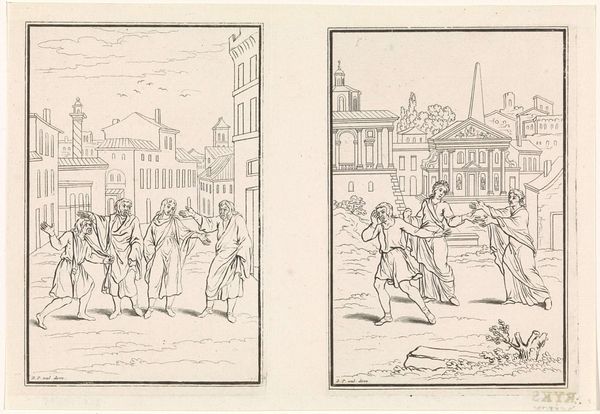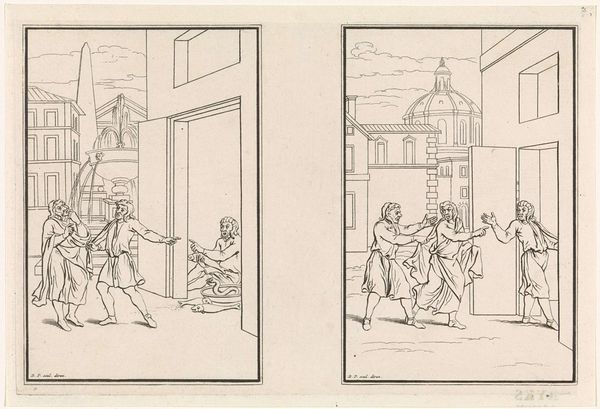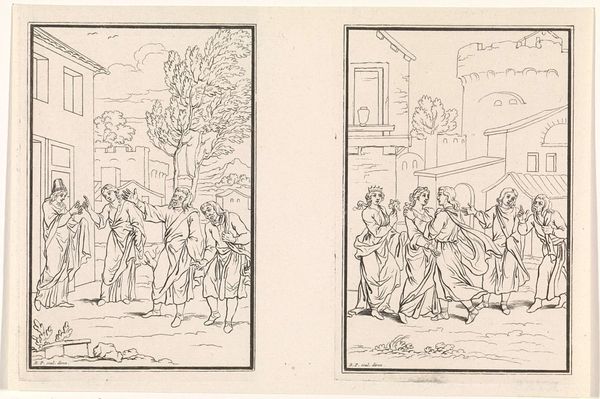
drawing, print, paper, ink, pen, engraving
#
drawing
#
narrative-art
#
baroque
# print
#
pen illustration
#
pen sketch
#
landscape
#
figuration
#
paper
#
ink
#
pen
#
cityscape
#
history-painting
#
academic-art
#
engraving
Dimensions: height 129 mm, width 191 mm
Copyright: Rijks Museum: Open Domain
Editor: This is a print from 1716 by Bernard Picart, titled *Two Scenes from the Comedy Adelphoe by Terentius*. It's rendered in pen and ink, split into two panels like a comic strip. The stark linework gives it an antique feel. What story do you think these scenes are trying to tell? Curator: Ah, Picart! He’s like a time-traveling cartoonist, isn't he? What strikes me is the theatricality. These aren’t just illustrations, they're mini-stages! Notice how the figures in the left panel seem to be gesturing towards a grand backdrop – is that a hint of Ancient Rome in the architecture? And the second scene… such restrained passion! It feels almost staged, a delicate dance of emotional expression. What do you make of that? Editor: It’s interesting you call it a dance. It almost looks like two separate plays happening on the same page. The emotions in each panel seem quite different, which maybe speaks to the comedic aspect. Do you think Picart intended for them to be viewed as directly connected? Curator: Ah, there's the juicy bit, isn't it? Connected, or juxtaposed? Think of it as Picart holding up two mirrors to Roman society through the lens of theatre. One reflects public pronouncements, perhaps anxieties, played out in a very urban setting, and the other a more intimate, perhaps interpersonal conflict. Which 'mirror' feels truer, or more engaging, to you? That's where the magic lies, and what keeps the old plays speaking across the centuries. It almost makes you wonder what *we* perform in our own lives, doesn't it? Editor: It does! I never thought about illustrations having so much depth. It makes you think about the ways people perform emotions publicly, then and now. I'll definitely view illustrations differently going forward. Curator: Fantastic. And maybe now you see old Bernard with kinder eyes as well.
Comments
No comments
Be the first to comment and join the conversation on the ultimate creative platform.

